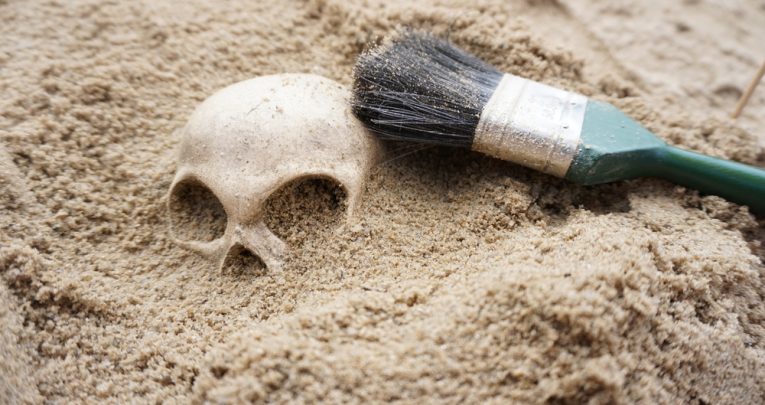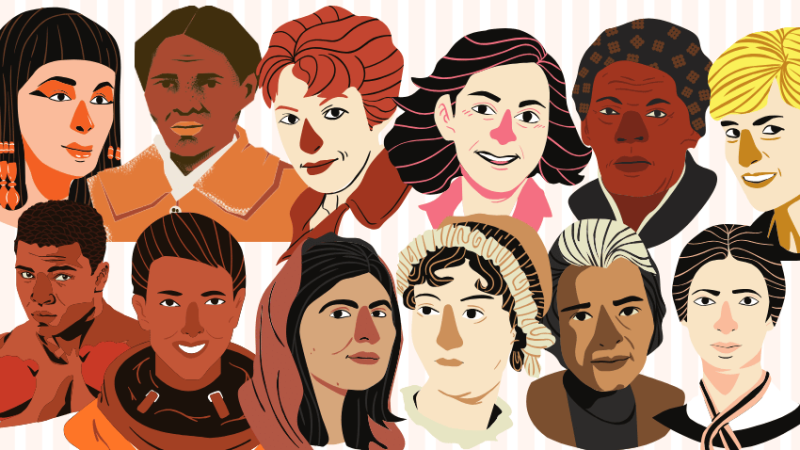How to Turn Primary Pupils into Budding Archaeologists

If children think your little part of the world has no archaeological significance, just remember that Richard III was found under a car park in Leicester, says Bev Forrest…

- by Bev Forrest
- History specialist, former chair of Historical Association Primary Committee

I became aware of the power of archaeology some years ago when, working as a primary teacher in Bradford, I organised a dig in the school grounds. The children unearthed some fragments of Elizabethan pottery and I commented that the last person to touch these pieces may have been alive at the same time as Elizabeth I.
Imagine my disappointment when one Y4 child responded: “Oh, does that mean the Tudors lived in Bradford?”
It was then I realised archaeology can help children understand history isn’t something that just happened to the rich and famous in faraway places; it’s something of which they are part.
The history curriculum, with its emphasis on the pre-1066 period, and the inclusion of prehistory at KS2, has resulted in teachers searching for ways to make seemingly inaccessible time periods relevant and meaningful to pupils.
Engaging children with archaeology can help them find out how we piece together the story of the distant past, and gain a better understanding of people’s lives through the objects they left behind.
Laying the groundwork
When I meet groups of children, or even adults, I like to ask them ‘What is archaeology?’, and ‘What does an archaeologist do?’. The answer I tend to get is that it all seems to hinge on digging.
However, archaeology is a far more complex process than just the excavation. It develops historical skills such as deduction and interpretation, and gives the children a strong understanding of chronology.
Other subjects in the curriculum are also well-served by archaeology, whether it’s mathematics, through the measuring of objects found, or science, in studying the decay of artefacts.
While the excavation process and what it unearths is important, it’s what these finds tell about the people in the past that is so crucial.
Recently, I was finding it hard to make any kind of connection between myself and prehistoric people and, as a result, teaching the subject lacked meaning for me. That is until I saw a display of finds from the Mesolithic period excavated at Star Carr, near Pickering.
Inside one case were stones and bird bones, each one with carefully made holes. Despite the struggles for survival these people faced, it appears they still wore jewellery – something I love to do!
The most obvious place to introduce archaeology, of course, would be the study of prehistory. Make sure you’re clear it is not a novelty, and that it is not a one-off task for the children.
Let them know what knowledge and skills will be learnt through its use, and incorporate it into a number of history units so that these skills can be developed meaningfully.
It makes sense to introduce your pupils to archaeology early, at KS1 or even at EYFS, in order to facilitate development.
At KS1 you could incorporate it when studying your locality, or perhaps by introducing significant people or events, most notably Howard Carter and the discovery of Tutankhamen.
This will give younger children a better understanding of how we find out about the past, and help them begin to develop chronological frameworks by looking at simple stratigraphy (the study of rock layers).
You can always organise a visit from an archaeologist, or if you want an easily-accessible introduction, use the book The Dog Who Could Dig by Jonathan Long.
Get to the bottom of things
Most importantly, though, children will want to dig. How you get started with this is very dependent on the time and resources available.
I developed a medium-term plan for prehistory, available on the Historical Association website, which is based on utilising an archaeological approach and culminates in a small-scale excavation.
But if you want to start with something less ambitious, try a simulated indoor excavation. These ‘sand tray digs’ aren’t just for KS1 pupils, as they can be made more complex and challenging for older children by using grids to record finds, and detailed cataloguing and conservation work.
Be warned though, these experiences will only serve to make your pupils even keener to excavate outdoors.
Teachers always ask me ‘What will I do if the pupils don’t find anything?’ Firstly, don’t worry, they will find something. Shards of Victorian pottery are most commonly acquired. Secondly, you will find your pupils will be engaged with the process and even the most modest finds will be met with excitement.
While working on a dig in West Yorkshire, pupils were in awe after discovering some shiny black stuff. “What is it?” they asked. We had to explain that this was coal, the same material that many of their grandparents had spent years mining underground to provide fuel for their community.
Old maps and plans of the site showing previous dwellings or places of work are helpful in selecting the best places to dig.
Yes, you may find the initial planning for the dig daunting, but you’ll be surprised what support you might find just within the school community.
I had a parent studying for a Masters in archaeology who gave us access to a lab to analyse finds, and a teaching assistant who was a keen amateur archaeologist.
So what’s stopping you? Get digging. And don’t forget, this is an opportunity for your pupils as archaeologists and historians to contribute to the story of your locality, just like my class did.
We found a spent bullet cartridge in our excavation, which led to an investigation and a discovery that our school was the HQ of the local Home Guard – could that cartridge have been left from target practice, they wondered.
Raiders of the lost art
From jigsaws to skeletons, here are some great ideas to get your class on the path to becoming budding archaeologists…
Find the missing link
Bury some bits of a jigsaw with large wooden pieces in a simulated excavation in the classroom. As children discover the pieces they can put them together to get a better idea of the whole picture, replicating the fragmentary nature of archaeological evidence and how it gives us a better understanding of the past.
Deliberately leave out a few pieces so that the puzzle is incomplete, and let the children use the available evidence to deduce what the finished image should look like.
Just as in archaeology there will be a number of different representations of the image dependent on that child’s interpretation. Introduce them to the Amesbury Archer as an example.
Get in character
Ian Dawson’s Thinking History website takes you through a simulation with the pupils as the archaeologists. It’s intended for secondary pupils, but could easily be adapted for a primary audience.
I have used the opening stages of the activity but, instead of finding a skeleton, the pupils have discovered pieces of what turns out to be a tyg (a multi-handled drinking vessel).
They have to examine the fragments for clues to help them reconstruct the object, and give a hypothesis about the owner and the time in which he lived.
This is an excellent way of developing observation skills and vocabulary related to artefacts.
Play dead
A great way to explain why certain objects remain or perish is the ‘dead body exercise’. One pupil takes the role of the body, while the rest decide which parts of her, including clothing and accessories, will remain in the future.
This is an excellent way of reinforcing organic and inorganic materials for science, and you can also discuss why bodies and accompanying items are better preserved in some environments, such as with the Lindow Man. Bev Forrest is a primary teacher trainer and member of the Historical Association primary committee. She is on the editorial board of the journal Primary History and is an assessor for the History Quality Mark.







